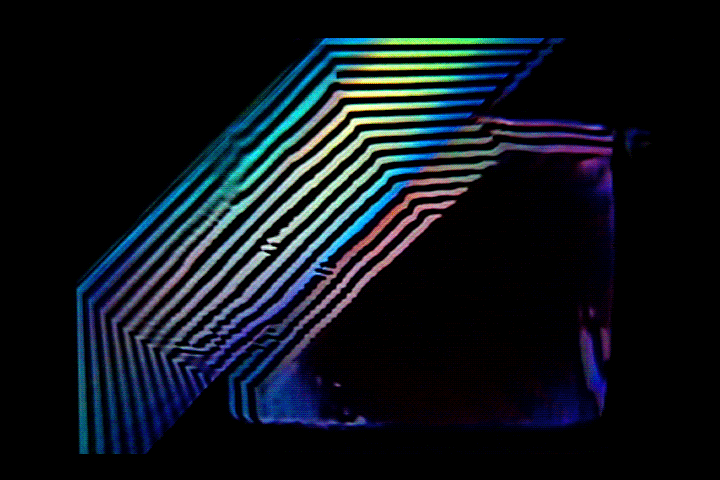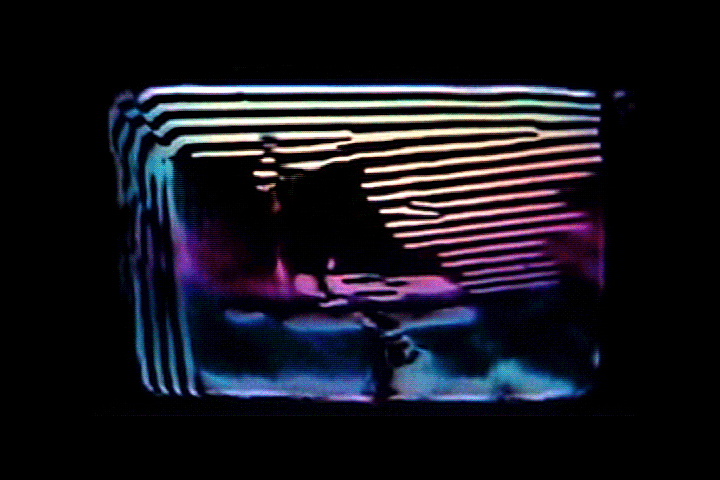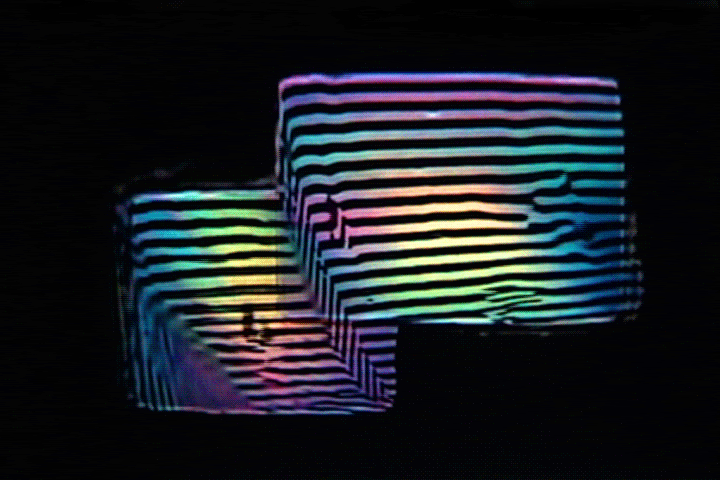29.3.11
21.3.11
VIBEKE SORENSEN

Vibeke Sorensen working on 'S'electrons' (1978)
Vibeke Sorensen is an artist working in experimental new media, including computer graphics and animation. From her early work with hybrid video synthesizers in the 1970s, through her long engagement with three-dimensional computer graphics, to her internet based pieces and architectural installations, she has created a series of prints, films, videotapes, and interactive works while also experimenting with and contributing to the development of new systems and methods.

Phil Mercurio and Vibeke Sorensen in the Advanced Scientific Visualization Laboratory, SDSC
Abstract video art created in 1980. Video by Tom DeWitt, Vibeke Sorensen and Dean Winkler.
Music by Vibeke Sorensen.
REJUVINATION
Excerpt from video by Tom DeWitt, Vibeke Sorensen, and Dean Winkler, 1983
Music by Vibeke Sorensen
CALYPSO CAMEO
Video by Vibeke Sorensen and Tom DeWitt, 1983
Music by Vibeke Sorensen
20.3.11
12.3.11
8.3.11
RUTH LEAVITT
As a grand student of Hans Hofmann having studied painting with Peter Busa it seems strange, even to me, to be involved with anything mechanical. My art studies were firmly grounded in abstract expressionism—dripping paint, house paintbrushes, and the attitude 'I know nothing.' It is quite a leap to a computer, a plotter, and conscious decision making. However, the change has been gradual and I feel I am combining both attitudes, abstract expressionism and constructivism in my work.


I find that using the computer I do not have to give up my traditional role as artist. The machine acts as a multifaceted tool which I control. When I began to use the computer I had no knowledge of programming. I have since taken a course on Fortran. This gave me an understanding of how the machine processes information, thereby giving me more control over my work. I do not actually code my programs, but I know what I can ask for and how to ask for it.
It is the option to create one's own work tools which, in my mind, makes computer art unique. A new role is now open to the artist in addition to the traditional one of making objects. He can create programs for himself, other artists, and perhaps even for the public. The impact of computers on art in the future will be greater because more artists will have access to machines. I have no doubt that the public shall also have access to computers and certainly more leisure time. If computer art is to become 'the public art' it will not be because graphics can be produced cheaply and en masse as some have predicted. It will be 'the public art' because the public will be generating works of art with programs that artists have created.

As long as I have access to a computer, I will continue to use it. The machine allows me to create artworks that would probably be impossible to produce in any other reasonable way. With the aid of the computer I can now explore areas which artists in the past only thought possible to dream about."
Minneapolis, Minnesota
February 1976
LE TEMPS N'EST PAS FAIT DE TEMPS


Le cinématographe a détruit cette illusion; il montre que le temps n'est qu'une perspective, née de la succession des phénomènes comme l'espace n'est qu'une perspective de la coexistence des choses. Le temps ne contient rien qu'on puisse appeler temps en soi, pas plus que l'espace ne renferme d'espace en soi. Ils ne se composent, l'un et l'autre, que de rapports, essentiellement variables, entre des apparences qui se produisent successivement ou simultanément. C'est pourquoi il peut y avoir trente-six temps différents et vingt sortes d'espaces, comme il peut y avoir d'innombrables perspectives particulières, selon les positions infiniment diverses des objets et de leur observateur.

Ainsi, après nous avoir indiqué l'irréalité du continu comme du discontinu, le cinématographe nous introduit, et assez brutalement, dans l'irréalité de l'espace-temps.
-Jean Epstein, L'intelligence d'une machine, repris dans Écrits sur le cinéma, vol.1 1974
Pure beauty: http://www.ubu.com/film/epstein_temp.html
1.3.11
PETER DONEBAUER
Music composed and performed by Simon Desorgher
It was recorded by the BBC as an outside broadcast from the Royal College of Art television studio in Kensington, London on 15th April 1974. Pictures and sound were transmitted via a microwave link to the Television Centre at White City via the Crystal Palace transmitter on the other side of London (as no direct line of site was available between the two sites just two miles apart!)
The imagery and sound were performed and recorded by Donebauer and Desorgher “playing” together in real time with both participants having visual and aural feedback of each other’s transforming contributions as they affected the piece in real time and thus in turn their own continuing contributions. The tape represents the best early example of the visual techniques Donebauer had developed through access to the old ATV colour studio donated to the College by Lew Grade. These techniques involved manipulating the studio in ways for which it was never designed, enabling the development of a form of “Electronic Painting” equivalent to the “Electronic Music” that was being first developed around that time. The two went on to work together for several years with Desorgher providing and co-ordinating the sound elements through a mixture of traditional musical instruments and electronics.
The imagery is non-representational, and the tape’s theme is an allegory of the experience of birth in the physical sense and re-birth in the metaphysical sense. The tape’s structure is in three sections separated by moments of darkness. The first section suggests the security of a womb. The second section develops through a series of contractions leading to the expansion of birth itself. The final section suggests the quiescence of rest and sleep.
http://www.donebauer.net/









